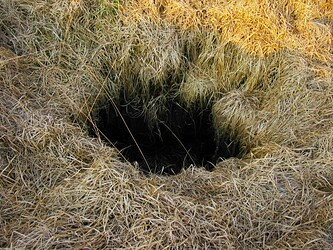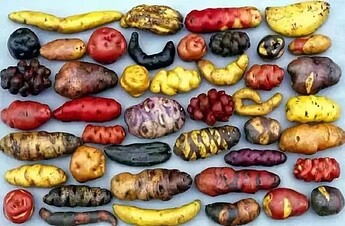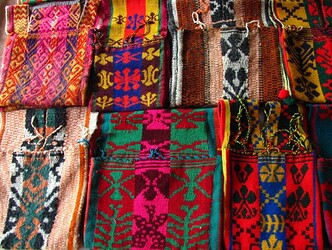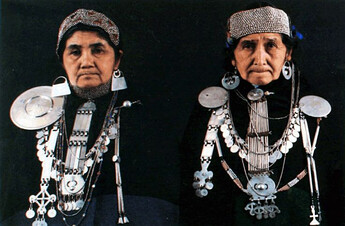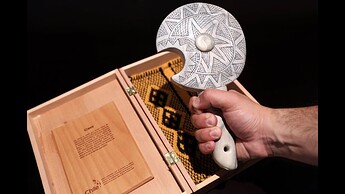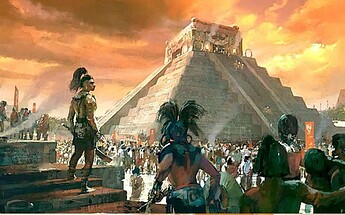KLAMATH
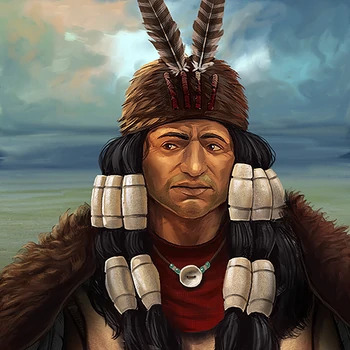
Klamath | Wiki de la serie Age of Empires | Fandom
Summary
CURRENT TECHS:
- Klamath Work Ethos (100f, 100w, 100c): Villagers gather resources +5% faster.
Rework: (175f, 175w, 175c) Villagers gather resources 10% faster.
Why: This tech pays off after several minutes and even so, it might not pay off at all before the match is over. 40 vills with Work Ethos are worth 42 vills, but all those 300 resources could’ve been used to simply produce 3 vills, so you’d have 43 instead - Klamath Huckleberry Feast (150w, 150c): Ships 100 food for every 3 minutes the game has passed, up to 30 minutes
Rework 1: Cost increased. Ships 150f or 200f every 3 min.
Rework 2: Cost increased. Ships 100f every 2 min.
Why: It’s cheap but it pays off sooo late: At best, after half an hour you receive only 1000f. Mid-game of 12 min= only 400f. - Klamath Strategy (200w, 150c): Klamath Riflemen get +25% attack
Rework: Cost reduced to 150w, 100c, moved to Commerce Age.
Why: On top of being more expensive than their Elite upgrade, this tech is unavailable on age2 and doesn’t buff HP. This tweak makes it on pair with the Elite Upgrade cost.
NEW TECH
- Klamath Trade (150f, 150c): improves market buy rate by 25%. Your next age up is 25% faster.
Why: Differently of many tribes, Klamath praised individual hard work and their results: Wealth was something acknowledge as reward from individual prowess (the technology Klamath Work Ethos derives from it). Nowadays they’re one of the wealthiest tribes in USA. This technology complements the focus on (developing) a better economy given by this minor civ.
Lore: Klamath | Encyclopedia.com (ECONOMY AND SOCIOPOLITICAL CULTURE) - Klamath Counter Strategy (250w, 250c): At war, Klamath’s tactics shines once more to fight on.
New effect: Rifle Infantry +15% siege resistance. Artillery + 15% ranged damage
Why: Klamath lacks a military technology specific techs for skirmishes are rare too.
Summary
- Klamath Work Ethos: Objectively too weak even for its relatively low cost, especially considering food is the easiest and fastest resource to gather, if the most used. The pay off is too little too late. Rework proposals:
1- Decrease the interval of crates increasing from 3 min to 2 min. This puts it in line from similar tech found with Zapotec, Mapuche, and legacy Aztecs.
2- Increase the food crates from 100f to 200f. Still pays off more slowly, but now has much more punch. Of course, these numbers could be refined more, but you get the general directions of change. - Klamath Huckleberry Feast: Another tech fine in concept but where the numbers are just too low. While this tech has some overlap with similar Asian market techs, I think it’s fine to leave as is in concept. Just have to play with the numbers some more.
Rework proposals:
1- reduce the cost of the tech to 50f 50w 50c
2- increase the effect to 8% and keep the cost the same
3- increase the effect to 10% but increase the cost, maybe to 125 or 150 of each resource - Klamath Strategy: If you don’t know/remember, in legacy the Elite upgrade was also 200w 150c. DE has since put that on sale with a 50% discount, only 100w 75c. Given they’re the same cost in legacy, I think this was meant as a pseudo second elite upgrade. With that in mind, I think this tech should also be reduced to 100w 75c to match the elite tech’s new price.
Rework proposals:
1- Cost reduced to 100w 75c. Still locked on age 3
2- Should the cost remain the same , this tech should receive an additional bonus.
MAPUCHE
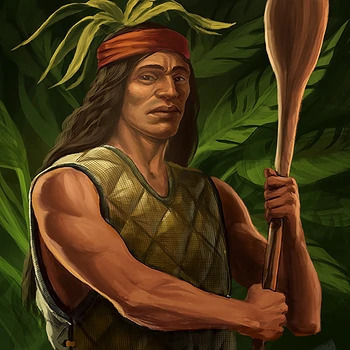
MAPUCHE: Mapuche | Age of Empires Series Wiki | Fandom
Summary
REWORKED TECHS:
- Mapuche Treaty of Quillin: It could become a passive upgrade where it delivers 100 gold every 3-4 minutes while you are an ally. Immediately gives you 100 gold when upgrading. If the TP is destroyed, and you have already made the upgrade, you should wait the specified time after rebuilding the TP.

NEW TECHNOLOGIES:
- Anti-cavalry traps: The Mapuches install traps to deter enemy cavalry and thus protect your base and your economy from raiding.
New Effects: Cavalry lose 40% speed near town centers and crops, and also lose 2 line of sight.
Why: It is a good improvement to defend the economy without much pressure, forcing the enemy to change their strategy in case they want to raid.
Lore: Mapuches learned from the Spanish to build forts in hills; they also began digging traps for Spanish horses, using helmets and wooden shields against arquebuses. (Mapuche history - Wikipedia)
- Mapuche Roads: The Mapuche will allow you to use their vast network of roads and you will be able to trade and receive supplies more efficiently. Trade route improvements are cheaper and at the same time the routes are more productive. Supplies arrive faster at their destination.
New Effect: Trade route upgrades cost 50% less, and give you 10% more resources.
Supply crates and construction carts arrive 15% faster. In addition, all the supply crates that you have sent so far are re-enabled.
Why: Only to expand the strategic possibilities. Maybe your idea is to defeat the enemy without having to age and enabling the supplies you have sent so far would be a good way.
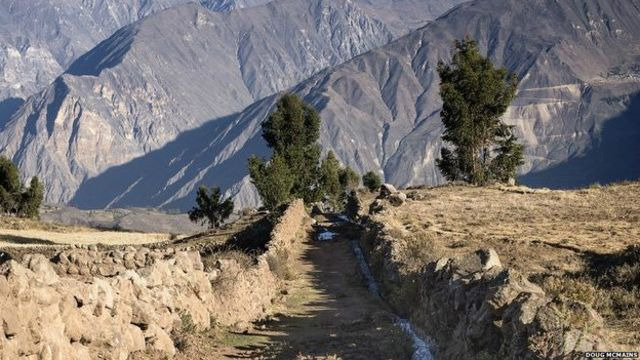
(This is an Inca trail, but I assume they are similar).
Lore: Mapuche territory had an effective system of roads before the Spanish arrival as evidenced by the fast advances of the Spanish conquerors. Mapuche history - Wikipedia
- Butalmapu: In times of war the Mapuche form the confederation called ‘Butalmapu’, a strong alliance that makes the Mapuche warriors faster, more resistant and stronger. Your crops and harvesting of natural resources (except mining) also improve accordingly.
New effect: Mapuche warriors with 10% more speed, damage and resistance points. Crops and natural resources (except mining) 5% more productive. (Available in IV age).
Why: Melee units tend to get obsolete late, so an aidiconal buff would do them good.
Lore: Butalmapu or Fütalmapu is the name in Mapudungun for “great land”, which were one of the great confederations wherein the Mapuche people organized themselves in case of war. These confederations corresponded to the great geographic areas inhabited by the Mapuches in Chile. Butalmapu - Wikipedia
- Potato Crops: Tuber that is optimal for cold climates: By planting this crop you will obtain food from your crops in the hills and highlands.
New Effect: More productive food crops by 10%. You will also receive a food crate for each shipment you have made so far.
Why: The potato is an important tuber in South America and I think it also deserves representation.
Lore: “Potato was the staple food of most Mapuches, “specially in the southern and coastal [Mapuche] territories where maize did not reach maturity”.[44] The bulk of the Mapuche population worked in agriculture.” Papas nativas chilotas, patrimonio de la humanidad – Territorio Ancestral
Summary
NEW TECHS
- Mapuche Mantles Textiles (225f, 225c): You bred better livestock and can make the better of their wool.
Effect: Livestock can store 30% more food. Improves ranged resistance of Settlers by 10%.
Why: A sudanese technology makes Cavalry and shock infantry get +10% melee resistance for 250w, 250c. This one improves settlers by the same amount.
Lore: “One of the best-known arts of the Mapuche is their textiles, which were used as clothing, as tool and shelter for the home, as well as a status symbol. By the end of the sixteenth century, the indigenous people had bred sheep with more robust bodies and thicker and longer wool than those imported by the Europeans” Mapuche textiles - Wikipedia ¹// -The Magical meaning behind Mapuche textiles - ²
- Mapuche Silverwork/Mapuche Silver Finery (225W, 225c): Acknowledgement and alliance with the Mapuche tribes strengths the trade and the wealth between you and them.
New effect: Trading Posts on routes award +30% XP and coin. Native Trading Posts trickle 1.5 coin/s. Improves Market buy/sell rate by 20%
Why: Coin Stacked? I dunno. But considering Mapuche are on maps where the coin mines are not that abundant and they have technologies focused on coin, I believe this one could be of good use. It’s a cheap tech and it starts gently considering you’re gonna have around 1 settlement anyway.
Lore: “Silverwork is one of the best known aspects of Mapuche material culture. They adopted metallurgy around the Spanish arrival era of the 16th century and during the latter half of the 18th century, Mapuche began to produce large amounts of silver finery”. Mapuche silverwork - Wikipedia ¹
- Mapuche Clava Hand Club (350w, 350c):
Effect: Increases the damage, base limit and AOE of Ironwood Clubman and Bolas Rider by 25%, 25% and +1 respectively. Available on Fortress Age.
Why: Both units are okay and both have special effects (Both Bolas and Clubman has an AOE damage), however they are still sub-optimal when comparing their standard counterparts. Buffing their damage is also an indirect buff due their area of effect.
Lore: “Clava is a traditional stone hand-club used by the Mapuche. It has a long flat body. Its full name is clava mere okewa; in Spanish, it is known as clava cefalomorfa. It has some ritual importance as a special sign of distinction carried by tribal chiefs. Many kinds of clavas are known.” Mapuche - Wikipedia ¹
800 años de antigüedad: Clava mapuche es subastada por $24 millones en París - Duna 89.7 | Duna 89.7 ²
MAYA
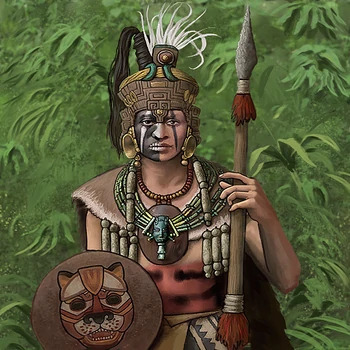
Maya | Age of Empires Series Wiki | Fandom
Summary
Mayas have only 2 pitful techs that are not remarkable at all. They would need at least at least four new ones to be even with African Minor tribes.
NEW TECHS
- Maya Polities (200w, 200c): The complex polities in Maya states will let you know the arrival of Home City shipments shipped by your opponents.
Effect: Randomly selects one opponent and boost his passive XP by 10%. When this tech is activated or nullified it is revealed globally to all players. For the next 6 min:
Home City shipments that naturally deliver wagons, units or crates and arrive to that opponent are revealed to you as well. When five shipments are revealed or you age up this technology is nullified.
Why: It might be very powerful, but it might work with proper balance. It is suppose to work on cards like 700wood, 6 Musks, 5 villagers, Fort Wagon etc. Effects that tie shipments (Spanish Gold) or civ bonus (free Uhlans) are not considered for the condition.
Lore: Throughout its history, the Maya area contained a varying mix of political complexity that included both states and chiefdoms. These polities fluctuated greatly in their relationships with each other and were engaged in a complex web of rivalries, periods of dominance or submission, vassalage, and alliances. Worldhistory.org; Researchgate;
- Maya Astronomy Codex (200f, 200c): Study Mayas’ astronomy and teach to your civilization."
Effect: Gives books worth of 1000 XP next time you age up. The following age up delivers 500xp instead.
Why: This one is similar to Zen Meditation (but cheaper due requirement). I’m ok with duplicated technologies as long as the minor natives won’t ever be on the same map.
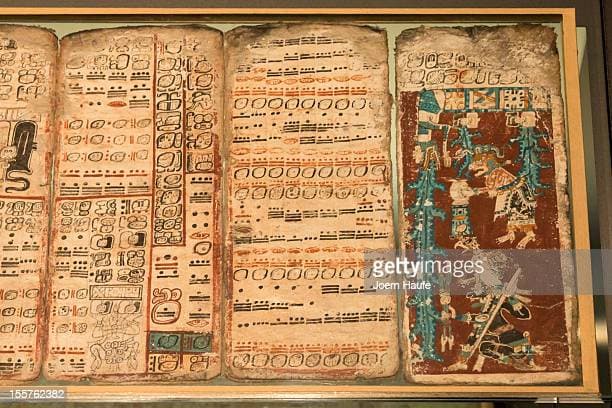
Lore: The Classic Maya in particular developed some of the most accurate pre-telescope astronomy in the world. At the time of the Spanish conquest they had many books but only four of these codices exist today.
Wikipedia - Maya city
- Maya Total Warfare (275w, 275c): The wins of Maya armies boost the prestige and power of your alliance.
Effect: You gain more 50% more XP for every unit killed and every building razed by your Maya Holcan Javelineer. You gain +10% more XP when that is done by your land military units (except siege units).
Why: This one targets your units but benefits Maya Javelineer even more.
Lore: Scholars have developed models for Maya warfare based on several lines of evidence suggesting critical resources such as water and agricultural land. Some suggest that the capture of sacrificial victims was a driving force behind warfare. New evidenced point out that violent, destructive warfare targeting both military and civilian resources (often referred to as “total warfare”) was taking place even before a changing climate imperiled Maya agriculture NatGeo - ancient-maya; Wikipedia- Maya_warfare
- Maya Altar (300f, 300c ): Every enemy killed favors the prestige of your Maya soldiers.
Effect: Maya Holcan Javelineer gains more damage (+10%) and better rof (+7%, except siege ) for each enemy they kill (up to 3 kills ).
Why: This tech is literally the “promotion” that was presented by KOTM and suits Mayan warfare culture: the bravest soldiers had the most prestige. My original proposal had a temporary perk but since the devs can made it permanent I’m doing it too.
Lore: Although warring leaders undoubtedly benefited materially, one of the main goals may have been to acquire sacrificial victims. Sacrifice not only legitimized the ruler by intimidating rivals and awing the citizens, but was also associated with concepts of sacred fluids and the passage of time. Warfare is alluded to in to the mythology of the Popol Vuh. Wikipedia- Maya_warfare
- Maya El Dorado (175f, 175c ): Maya wealth and mines benefit your own economy as well.
Effect: Gives a trickle of 1.5 coin. Increases this trickle by 0.6 coin for each Maya trading post you have.
Why: They only have 1 economic technology so I believe one more would help a lot.
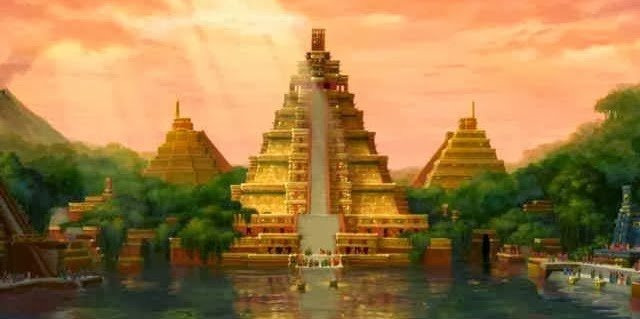
Lore: El Dorado was a mythical city said to be rich with gold, first reported in Europe in the 16th and 17th centuries. The rumoured location of El Dorado is disputed in different sources, but most commonly said to have been in South America. Trade in Maya civilization
REWORKED TECHS
- Maya Cotton Armor: This tech is too expensive. I believe that reducing the cost a bit or having a secondary bonus effect for their unit (e.g: Holcan Javelineer = +10% ranged armor) would be better.
- Maya Calendar: It applies to all food gathering but the cost feels a bit too much: cost reduction or small effect boost would be nice.
Summary
NEW TECH
- Unnamed new Mayan tech:
1. I’d like to reference one of the civ bonuses from AoE 2. A tech that reduces the cost of foot archers, say by 15%, could work but might be overpowered for civs like British or Japan.
2. This tech could increase the gather yield of all natural resources (hunts, livestock, berries, trees, mines, and fish). My first thought is the effect should be just 5% and cost 100 of each resource. This would put it in line with Klamath Work Ethos.
REWORKED TECHS
- Maya Cotton Armor: Lowering the cost to 200w 200c to bring it in line with Infantry Breastplate and Zapotec Cult of the Dead. If stretching it, you could maybe tack on +.1 melee armor
- Maya Calendar: It applies to all food gathering but the cost feels a bit too much: cost reduction or small effect boost would be nice.
Summary
NEW TECHS
- Crowbar (Atlatl): Holcan warriors’ accuracy, range, and lethality are enhanced by the use of the crowbar.
Effects: Holcan Warrior becomes ‘ranged shock infantry’ with missile resistance. Bonus +1.0 damage against cavalry and shock infantry, and improved range +4. (Why not?) (Available in IV ead).
Why: I think it could be a counterpart to Eagle Runner Knight to make it more efficient in the late game.

Lore: “The dart is thrown by the action of the upper arm and wrist. The throwing arm together with the atlatl acts as a lever. The spear-thrower is a low-mass, fast-moving extension of the throwing arm, increasing the length of the lever. This extra length allows the thrower to impart force to the dart over a longer distance, thus imparting more energy and higher speeds.” Spear-thrower - Wikipedia
- Limestone mines: This resource with which the Mayans build is now at your disposal, which means that you can build walls earlier and faster. Also defensive buildings like towers and forts do not require wood to upgrade.
New effect: Walls are built 50% faster and the bastion upgrade is free and moves to age II. Upgrading defensive buildings does not consume wood.
Why: In the DE the bastion was moved to the third age, but maybe some things should come back from time to time.
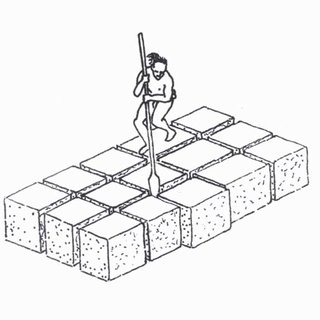
Lore: The Maya built their cities with Neolithic technology;[227] they built their structures from both perishable materials and from stone. The exact type of stone used in masonry construction varied according to locally available resources, and this also affected the building style. Across a broad swathe of the Maya area, limestone was immediately available.[228] The local limestone is relatively soft when freshly cut, but hardens with exposure. There was great variety in the quality of limestone, with good-quality stone available in the Usumacinta region; in the northern Yucatán, the limestone used in construction was of relatively poor quality.[227] Volcanic tuff was used at Copán, and nearby Quiriguá employed sandstone.[228] In Comalcalco, where suitable stone was not available locally,[229] fired bricks were employed.[228] Limestone was burned at high temperatures in order to manufacture cement, plaster, and stucco.[229] Lime-based cement was used to seal stonework in place, and stone blocks were fashioned using rope-and-water abrasion, and with obsidian tools. The Maya did not employ a functional wheel, so all loads were transported on litters, barges, or rolled on logs. Heavy loads were lifted with rope, but probably without employing pulleys. Maya civilization - Wikipedia
NEW UNIT
- Commoners:
Arch infantry unit, effective against infantry. You can also hunt, build houses and work on crops and in mines.
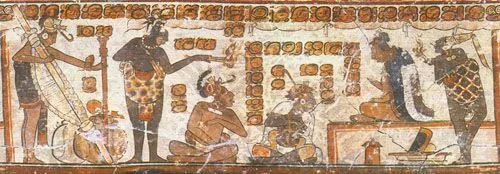
Lore: Life for Maya commoners involved hard physical work. That doesn’t mean their lives were unhappy or unsatisfied. Farming families lived simply but ate well. Their work that provided food for the family and the surplus fed everyone else. Women worked daily in their homes, cooking, grinding corn, raising the children, tending gardens, checking beehives and weaving cloth for their own clothes and the market. Men and boys went off to tend fields called milpas where maize or corn, beans and squash grew together. The central crop was maize but they also grew chili peppers, sweet potatoes, avocados, tomatoes, papaya, onions and garlic. Some families kept livestock like dogs, ducks and turkeys. Men also hunted deer and a wild pig known as a peccary and fished in the rivers, lakes and oceans. Daily Life for a Maya Commoner - History
Maya civilization - Wikipedia
NAVAJO
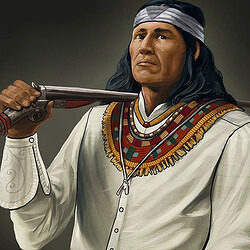
Navajo | Age of Empires Series Wiki | Fandom
Summary
NEW TECHS:
- Navajo Livestock Herding (200f, 150c): Navajo’s livestock ownership and agriculture are symbols of resourcefulness and prosperity. You’ll receive sheeps while this allaince is kept.
Effect: Spawns 3 sheep for every Navajo Trading Post you own and 2 sheep when you receive a shipment. Reduce the training cost of livestock by 25%.
Why: This tech complements Navajo Sheperds and mimics Navajo’s history of keeping large herds of livestock. It delivers unfattened sheeps (50 food) subjected to global limit (30) so it pays off slowly and doesn’t mess Treaty.
Lore: “Through Spanish colonists, the Navajos began keeping and herding livestock as a main source of trade and food. Later, sheep became a form of currency and status symbols among the Navajos based on the overall quantity of herds a family maintained.
Navajo Nation Department of Agriculture/ Northern Arizona University/ Wikipedia-Navajo
- Navajo Hogan Dwelling (125w, 125c): Improves your settlements as the Navajo teach you the efficiency of Hogans.
Effect: Grants 10 population without the need of house. Houses and Town Centers are 10% cheaper. Buildings have their repair cost reduced by 25%.
Why: Honestly: filler tech. I couldn’t think of anything worthy for it. There are already plenty of techs and cards that improve the HP, construction speed and cost of buildings.
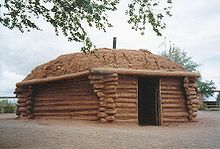
Lore: A hogan is the primary, traditional dwelling of the Navajo people but rarey used today. Some older hogans are now still used as dwellings and others are maintained for ceremonial purposes. Traditional structured hogans are also considered pioneers of energy efficient homes.
Wikipedia- Hogan/ Discovernavajo.com stay-in-a-hogan
- Navajo SandPainting (300f, 300c): The Navajo’s traditional Sand painting ceremony will heal your units.
Effect: Heals all idle economic units, native units, infantry and cavalry (in that priority order) by 600HP over 2s.
Why: This is a lore technology and it’s unique because it works like ’s only similar to China’s wonder (1000HP over 1s for all units). The devs can tweak the power and the cost because I’m not sure about them.
Lore: Sand painting is an art form but it is valued among the Navajo primarily for religious rather than aesthetic reasons. Practitioners believe sitting on the sandpainting heals the patient’s mind, body and soul by having the sandpainting absorb the ilness, then it is destroyed.
navajopeople.org -Sandpainting /Wikipedia-Sandpainting /Navajo arts symbols
- Navajo War (300w, 300c): Navajo Rifleman gets ready for war to defend themselves against new enemies. Available at Fortress Age.
Effect: Navajo Rifleman gains more range and LOS (+4) and becomes a Rifleman with proper multipliers.
Why: Navajo Rifleman is a weird unit (low range, no multiplier, no rifleman tag). Although 3 minor tribes have a skirmisher unit I’d like to see Navajo Rifleman back to being a “real skirmisher”. If not, it would’ve been good seeing him as a Musketeer unit or any other. Current Navajo is gimmick.

Lore: Navajo Wars covers at least three distinct periods of conflict: the Navajo against the Spanish (late 16th century through 1821); the Navajo against the Mexican government (1821 through 1848); and the Navajo against the United States (after the 1847–48 Mexican–American War). Wikipedia- Navajo_Wars
REWORKED TECHS:
- Navajo Weaving: Buff it to match Cree Tanning or rework it completely. The current effect is very weak.
- Navajo Craftsmanship: could have its cost reduced a bit.
- Navajo Shepherds: could use a small convertion to coin (i.e: 200w-> 150w, 50 coin).
OperaticShip743
Navajo Rifleman: Back as a rifleman unit.
NEW TECHS
- Navajo Raiding Party - sets multiplier vs villagers to 1 and grants the rifle infantry tag.
